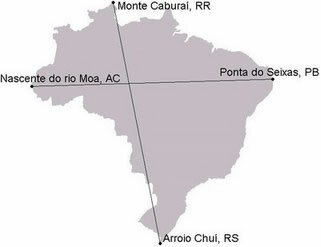THE Caatinga its main characteristic is the fact that it is the only biome exclusively Brazilian. Even so, studies released by the National Center for Research and Conservation of Biodiversity of the Cerrado and Caatinga (CECAT) warn that this is the least scientifically known forest domain in South America, both in terms of geography and biological observations. In any case, as research on the biome advances, more is discovered that it is a natural environment richer in biodiversity than previously thought.
Although it is of great importance for the natural conditions of the Brazilian Northeast region, the caatinga has been heavily deforested over the last few years. According to surveys by the National Institute for Space Research, around 45% of the original 734,478 km² of its vegetation were deforested by the year 2010. In 2015, a more in-depth study revealed that there is a proportion of 40% of Preserved Caatinga to 45% of Degraded Caatinga, 7.2% of Exposed Soil, 6.5% of farming and 0.7% of dead bodies. Water. Among the degraded areas, the space in the territories of Alagoas, Ceará, Bahia and Pernambuco stands out.
Mind Map: Caatinga

*To download the mind map in PDF, Click here!
The vegetation of this natural domain has a high calorific value, being quite suitable for use as firewood. This characteristic, associated with the great energy need of a region that suffers from the lack of investments and the State's presence, is the main cause of deforestation in the Caatinga. It is estimated that 30% of the energy used by local industries comes from this practice of extracting firewood from semiarid vegetation.
If we consider only the state of Pernambuco, according to data from Ibama (Brazilian Institute of Environment and Resources Natural Renewables), about 260 thousand trucks with firewood from the caatinga are transported to meet the energy demand of the region. Also according to the agency, there is a certain myth in thinking that the low-income population and small farmers are the main responsible for the deforestation in question. This is an energy problem associated with the ineffective performance of the State, both in permitting activities of this type and in the lack of adequate inspection of illegal practices.
Do not stop now... There's more after the advertising ;)
The effects of deforestation in the Caatinga are diverse, due to the importance of the vegetation for the region it occupies. In addition, there is still unproven evidence that the Caatinga may be more efficient in absorbing carbon dioxide in the atmosphere than tropical forests, given that the latter produce a greater amount of CO2 roughly equivalent to what they absorb.
Another consequence of deforestation in the Caatinga is the desertification. It is known that in regions with a warmer climate and with little rainfall, which is seen in some of the areas occupied by this biome, the tendency of desertification is high due to the dehydration of the soils caused by the high index of evaporation. With the removal of vegetation, the problem is intensified, in addition to making the soils more exposed and, therefore, highly prone to erosion and other environmental problems, such as salinization.
In response to this problem, the Ministry of the Environment prepared a plan to combat local deforestation through the creation of the PPCaatinga (Action Plan for the Prevention and Control of Deforestation in the Caatinga). The objective is to create a plan that aims to reduce the growing degradation of vegetation and that takes into account the phytogeographic particularities of the Caatinga. In addition, initiatives are being developed for reforestation, soil recovery and watersheds in the region, especially the semi-arid region of the so-called “drought polygon”.
In any case, it is also necessary that the government at the municipal, state and federal levels opt for planning actions aimed at diversifying the local energy sources – this being a region with high potential for the production of solar and wind energy – and prioritizing the sustainability of the region. Talking about sustainable development is talking about maintaining economic growth without reducing the availability of natural resources and available preservation areas.
By Me. Rodolfo Alves Pena
*Mental Map by Rafaela Sousa
Graduated in Geography
Would you like to reference this text in a school or academic work? Look:
PENA, Rodolfo F. Alves. "Deforestation of the Caatinga"; Brazil School. Available in: https://brasilescola.uol.com.br/brasil/desmatamento-caatinga.htm. Accessed on June 27, 2021.
geography of Brazil

Learn more about the plant formation known as Caatinga, an exclusively Brazilian biome that covers a large part of the Northeast region of Brazil. Check here aspects of this ecological unit, such as location, fauna, flora, climate, vegetation, soil and devastation. Here's everything you need to know about this biome!

